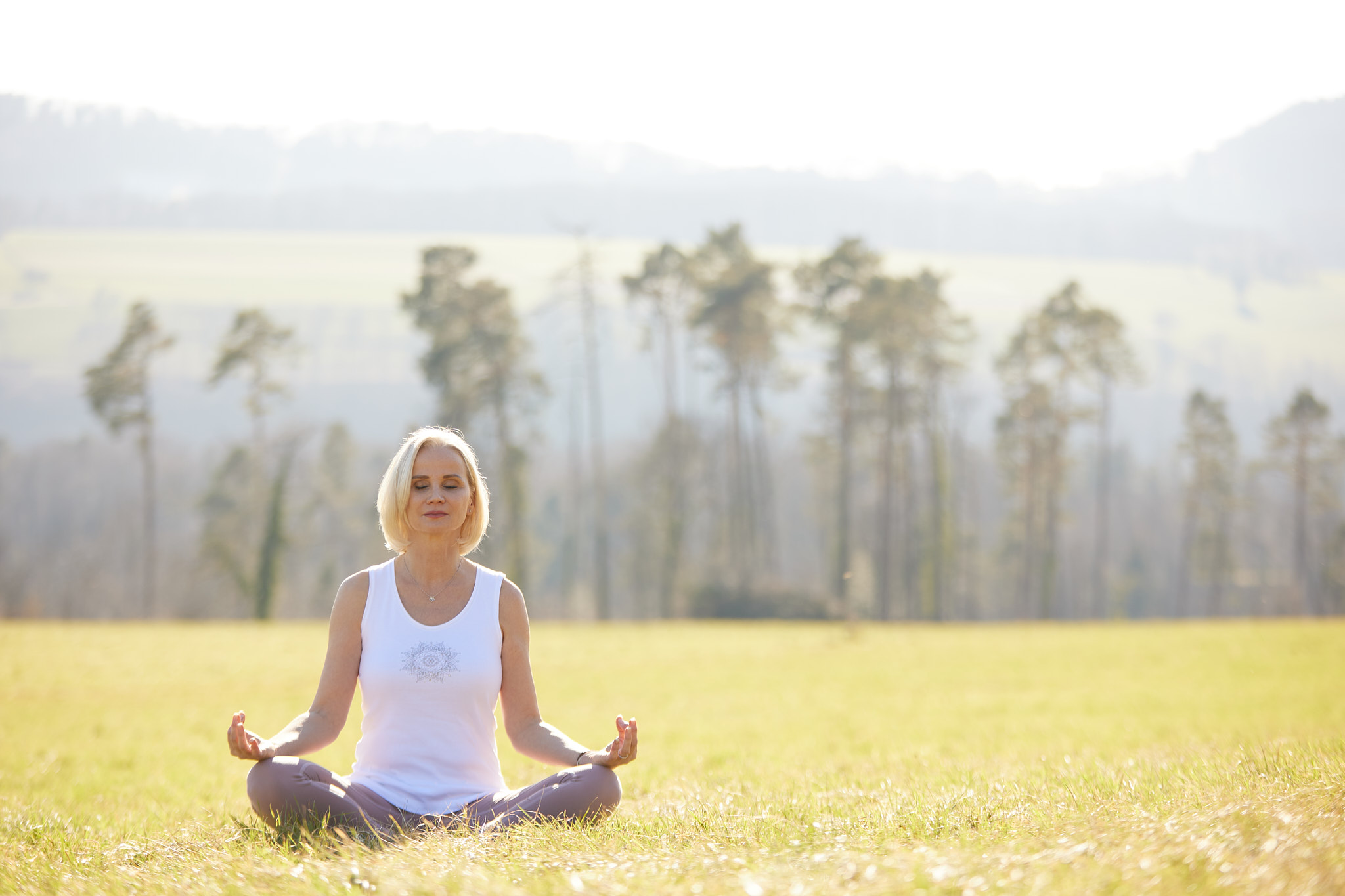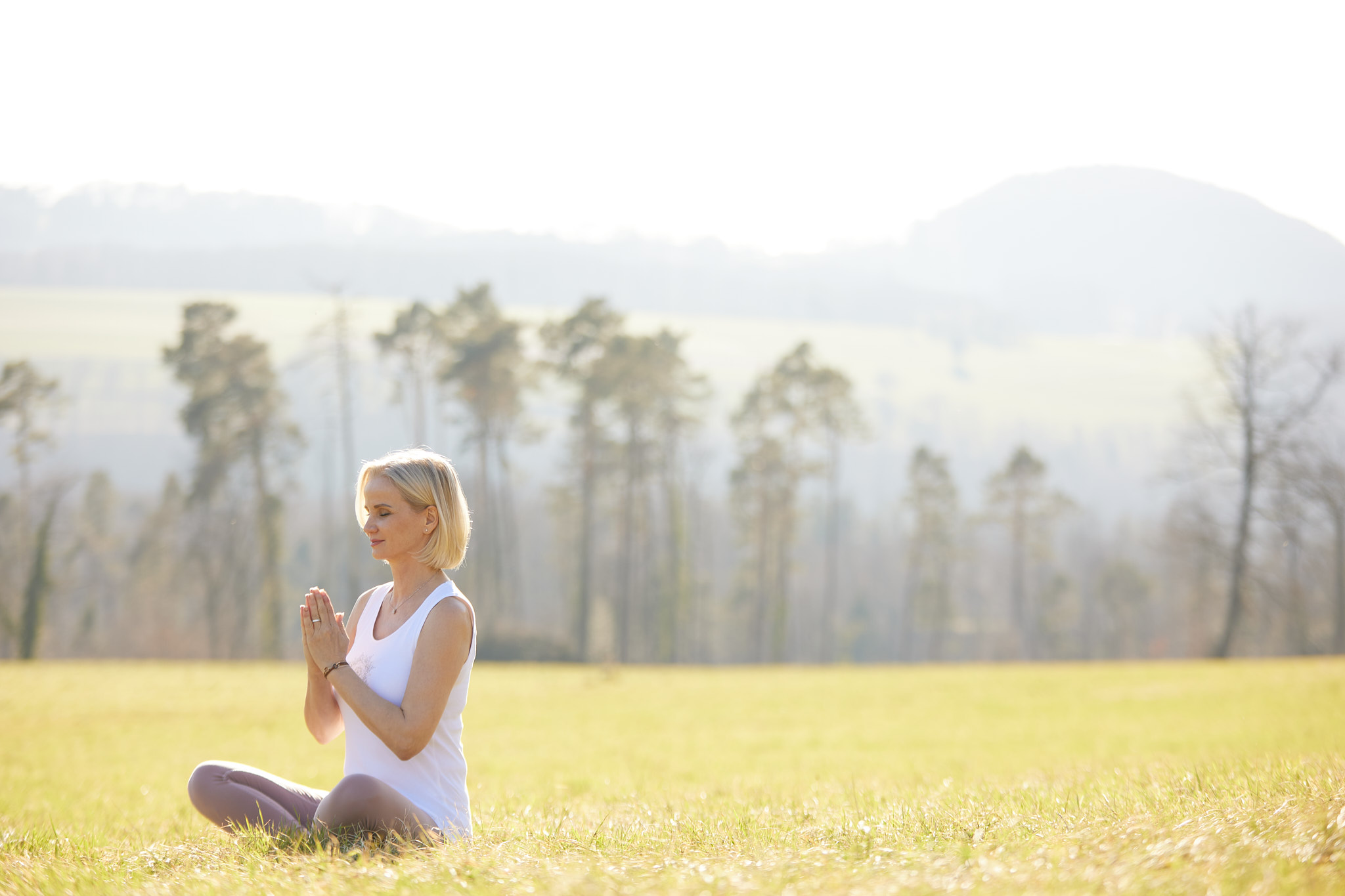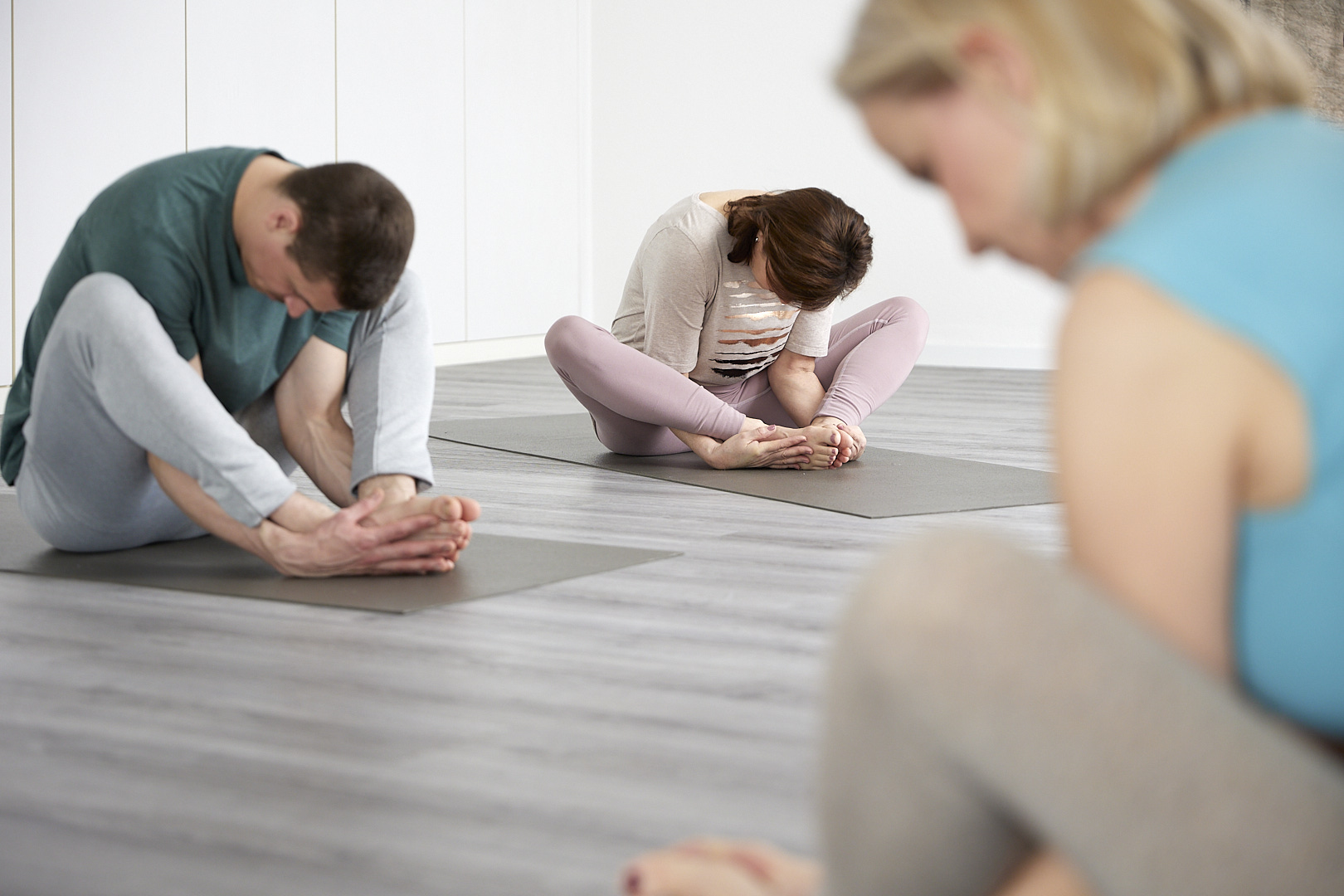«Yoga leads to a conscious approach to the body, thoughts and emotions.»
Christian Larsen, Book «Medical Yoga»
What Is Yoga?
The word «yoga» from the Old Indian (Sanskrit) means «yui» = to unite, to tighten. That is why yoga can be translated as «union of body and mind.»
According to a philosophy that is around 5,000 years old and has been carried from India to the entire world over time, yoga combines movements of the body with contemplation of the inner self. In the last 150 years, body-based Hatha Yoga has gained the greatest popularity in the West.
Yoga is not just a physical exercise, but a way to achieve complete harmony of body, mind and soul. Regular yoga practice has a positive effect on the musculoskeletal system as well as the nervous and glandular systems. The exercises activate blood circulation, the metabolism and the immune system. Yoga also has a positive effect on:
- strengthening of muscles and bones
- increased body awareness
- greater serenity
- increased ability to concentrate
- greater self-confidence
- more energy and zest for life
«Your yoga mat is your personal space, where body, mind and breath become one.»
Annika Isterling
Yoga as I teach it
I attach great importance to a relaxed and personal atmosphere in my lessons, so that I can optimally respond to the participants. This is easily possible in my small groups of up to six people.
The Hatha Yoga that I teach focuses on strengthening physical exercises combined with conscious breathing. My yoga classes contain the following elements of Hatha Yoga:
- Asanas (postures)
- Mudras (hand gestures)
- Bandhas (locks)
- Pranayama (breathing exercises)
- Meditation
- Relaxation
Taking into account the anatomy, I give detailed instructions for the individual positions and, if necessary and desired, make gentle corrections.
I integrate aspects of yoga philosophy into my lessons in an understandable way.
Pranayama
«The breath is the king of the spirit.»
Iyengar
Pranayama exercises are an essential element of my yoga lesson. Pranayama means «to control the life energy.» Pranayama encompasses the various breathing exercises of yoga. Pranayama is an ancient breathing technique that has its origins in yoga practice in India. It involves controlling the breath in various ways. Due to its positive effect on health, pranayama has become increasingly important in the West.


Mudras
«The hand is the outer brain of the human being.»
Immanuel Kant
Mudras are a valuable component of my yoga practice. Since these beautiful and effective hand gestures have fascinated me for a long time, I have completed an apprenticeship as a Mudra Expert. Mudras are gestures that are formed with hands and fingers. Mudra means «a gesture that brings joy.» The hand gestures direct energy into the body through the activation of the meridians and thus act on a mental and physical level. They calm the mind and thus contribute to physical and emotional health.
Meditation
«The inspiration you seek is already within you – be still and listen.»
Rumi
I regularly teach various meditation techniques to participants.
Meditation is a millennia-old method that has a relaxing effect through mindfulness and concentration exercises. Meditation is about calming the thoughts and focusing on the mind. Meditation is the key to positivity, inner peace, joy of life and creativity.


Yin Yoga
«Yin Yoga is simple, but simple does not mean easy.»
Bernie Clark
Once a week I offer a meditative Yin Yoga lesson.
The passive positions of Yin Yoga are held for three to five minutes, sometimes longer. The focus is more on the deeper layers of the body such as the joints, ligaments, tendons and especially the fascia, and less on the muscles. The meridians are activated and the energies of the organs are balanced.
The calm and inward-looking Yin Yoga also shows wonderful mental and emotional effects. It soothes body and mind, improves mobility and reduces stress and anxiety.
Yoga Nidra
«Yoga Nidra is the yoga of conscious sleep. Therein lies the secret of self-healing.»
Satyananda Saraswati
Yoga Nidra forms a harmonious conclusion to a Yoga lesson, which I occasionally enjoy leading.
Yoga Nidra – also called yogic sleep – is described as the state between wakefulness and sleep that enables strong deep relaxation. Body and mind can relax on all levels and stress and nervousness are reduced.
